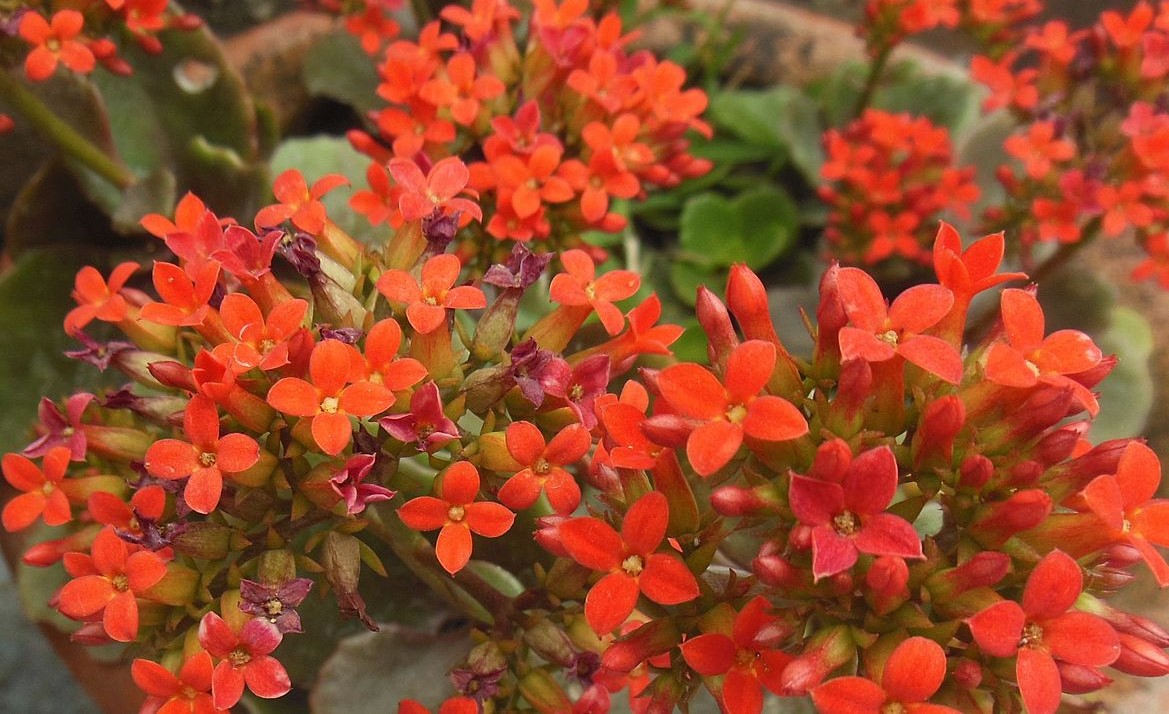Have yourself a merry little kalanchoe

COLUMBIA, Mo. — Few plants can boast colorful, long-lasting flowers and attractive foliage the remainder of the year, said University of Missouri Extension horticulturist David Trinklein.
Florist’s kalanchoe delivers both, making it a versatile houseplant. Its vibrant flowers provide a welcome burst of color during the dreary days of winter, Trinklein said.
There is nothing shy about kalanchoe flowers’ flamboyant shades of yellow, orange, red, pink and magenta. They beckon for attention and just will not go away.
In a press release, Trinklein said, “Kalanchoes are the Energizer Bunny of flowering houseplants. Their flowers just keep going and going and going.”
Additionally, their fleshy, glossy-green leaves with scalloped margins offer visual interest, even when not in bloom. “Kalanchoes really do offer the best of both worlds,” Trinklein said.
Most kalanchoes are native to Madagascar and tropical Africa. Several species are unique because of their method of propagation. For example, Kalanchoe daigremontiana reproduces viviparously. It bears copious numbers of plantlets along the edges of its leaves. When the plantlets drop off, they readily take root around the base of the main plant, giving rise to its common name of “mother-of-thousands.” It reproduces so prolifically that commercial growers often consider it a pest.
The most colorful and well-known kalanchoe is florist’s kalanchoe. It enjoys bright light and a well-drained growing medium. Plants tend to get spindly under low-light conditions. Florist’s kalanchoe prefers night temperatures of about 60 degrees Fahrenheit and day temperatures of about 70 F. Temperatures over 75 tend to delay or reduce flowering.
Because they are succulents, kalanchoes tolerate moisture stress. Their fleshy leaves are covered with a thick cuticle that prevents water loss. Therefore, allow the growing medium to dry before watering, said Trinklein. If you use a flowerpot with a saucer, drain any excess water from the saucer so it is not wicked back into the medium. Fertilize with a houseplant fertilizer according to label directions when the plant is actively growing.
Florist’s kalanchoe is relatively easy to rebloom. After the danger of frost has past, move plants outdoors in light shade or indirect sun. Cut back plants to about half of their height if they have become tall and leggy. Fertilize during the summer every two to three weeks with a houseplant fertilizer according to label directions.
Like poinsettia, kalanchoe needs short days and long nights to develop flowers. For Christmas blooming, start short-day treatment around the middle of September, after plants have been moved back indoors. A dark period of 14 hours results in the most blooms. The plants cannot be exposed to any light during the dark period. After the daily dark period, exposure to light for the remaining 10 hours in the day is required if the plant is to bloom.
Feed and water sparingly during flower induction. Plants should bloom in about six weeks.
Kalanchoes have few insect or disease problems. Overwatering results in crown rot that can lead to sudden plant death. Powdery mildew can be a problem when kalanchoes grow in greenhouses. However, the relative humidity of the average home is too low for the disease to be a problem.
Propagation of kalanchoes is relatively easy. Remove flowers from stems you plan to use for propagation. Use stem-tip cuttings 2-3 inches in length. Stick cuttings in a porous germination medium such as a mixture of peat and vermiculite. Maintain a high relative humidity around the cuttings. Rooting should occur within two to three weeks.
Trinklein said kalanchoe’s beauty comes with a risk. Most species contain cardiac glycosides that are toxic to many animals, including dogs and cats. Flowers contain more glycosides than other parts of the plant. The U.S. Food and Drug Administration recommends keeping kalanchoes away from pets.
Miss Clipping Out Stories to Save for Later?
Click the Purchase Story button below to order a print of this story. We will print it for you on matte photo paper to keep forever.

